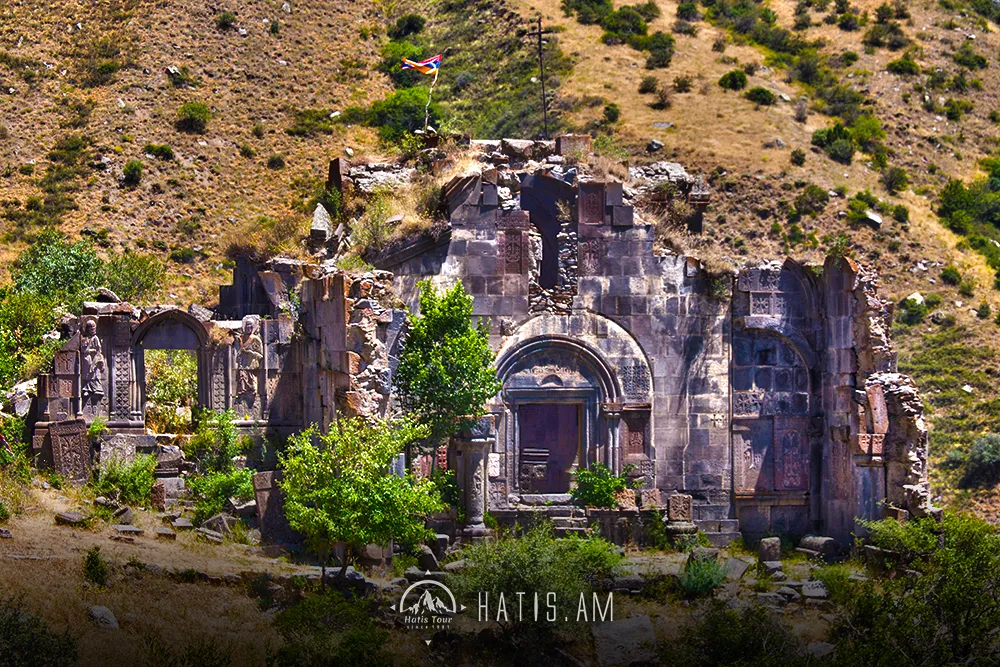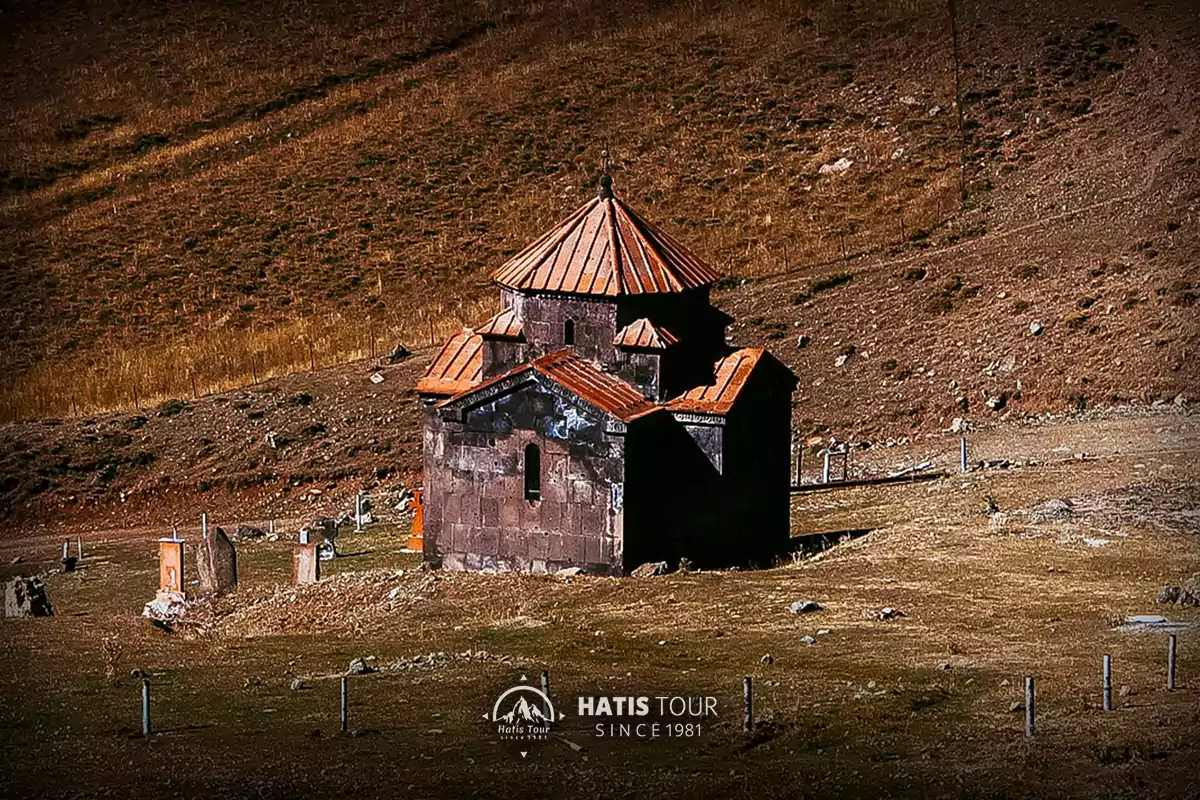
Talin Cathedral Monastery Complex or Katoghike Talin Church is located in Talin, Aragatsotn region, Armenia. The construction is attributed to the Kamsarakan princes. No historical or lithographic information about the temple has been preserved. According to the analysis of architectural features, Katoghike dates back to the 7th century. This is a three-nave, domed, cruciform three-altar basilica facing east. The tabernacles are pentagonal in shape. Apses were built on the north-south side of the high tabernacle, the upper floors of which served as hiding places. The prayer hall is divided by two rows of columns into a central, high and wide nave with two side vaulted naves. The transition from the domed area to the drum is carried out by four sails, and from the drum to the dome - by small pipes. It has five entrances, one from the west, two from the north and south. It is built of red polished tuff. Katoghike stands out for its rich exterior decoration, molded window crowns, cornices, and a unique design of the western facade. Inside the temple, the remains of frescoes, commissioned by Moses Confessor, have been preserved, as evidenced by the inscription preserved inside the temple.


.webp)
.webp)
.webp)
.webp)
.webp)
.webp)
.webp)
.webp)
.webp)
.webp)
.webp)
.webp)






.webp)
.webp)
.webp)
.webp)
.webp)
.webp)

.webp)
Leave a comment